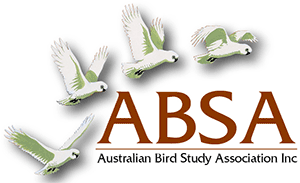Band recoveries and sightings of Yellow-billed Spoonbill and Royal Spoonbill in Australia
| Posted: |
14/10/2025 |
| Author(s): |
Kim W. Lowe |
Two species of spoonbill occur in Australia. The movement ecology of the Yellow-billed Spoonbill is poorly known, whereas the movement of Royal Spoonbill in Australia is better known, particularly from a recent satellite telemetry study of individuals captured in the Murray Darling Basin. Additional data on the movement of Yellow-billed Spoonbill and Royal Spoonbill (particularly those breeding outside of the Murray Darling Basin) are needed. This study provides an analysis of movement data derived from banding studies, considers their adequacy and makes recommendations for future research. Recoveries and sightings of individuals of both species banded as nestlings or recently fledged young recorded through the Australian Bird and Bat Banding Schemes between 1955 and 2022 were mapped and summarised. Yellow-billed Spoonbill were mostly banded in Western Australia and Royal Spoonbill were only banded in eastern Australia (mostly Victoria). The longest time between banding and recovery of a living bird was 22 years 1 month for a Royal Spoonbill and 11 months for a Yellow-billed Spoonbill. Band recoveries for Yellow-billed Spoonbill were generally at shorter distances from the banding site than for Royal Spoonbill. Yellow-billed Spoonbill recoveries were mostly <100km from banding site, suggesting that young juveniles are mostly sedentary. There was also evidence suggesting that Yellow-billed Spoonbill banded at the same place and time had moved together to other sites (up to 92 km away). Royal Spoonbill exhibited mixed movement strategies in different regions and age groups. There was no evidence of Royal Spoonbill returning to their natal areas. Most Royal Spoonbill recoveries were in coastal New South Wales and Queensland from birds banded in coastal Victoria. This suggests that there may be a coastal flyway spanning from southern Victoria to coastal Queensland, additional to the inland flyway described recently in another study, and possibly with minimal overlap. The relationship between the populations that breed in coastal Victorian sites and those that breed in the Murray Darling Basin is unclear. New telemetry data are needed to document the level of connectivity and interactions between Royal Spoonbill that use coastal sites and those that use the Murray Darling Basin, including connection (or lack of) between the two flyways. This has important implications for how resources should be distributed to maximise the conservation outcomes for Royal Spoonbill at a national scale. Additional tracking is needed of Yellow-billed Spoonbill across eastern Australia, including the Murray Darling Basin, since most Yellow-billed Spoonbill banded to-date were from Western Australia.
>> Download Abstract |
File Size: 178 KB
MEMBERSONLY
